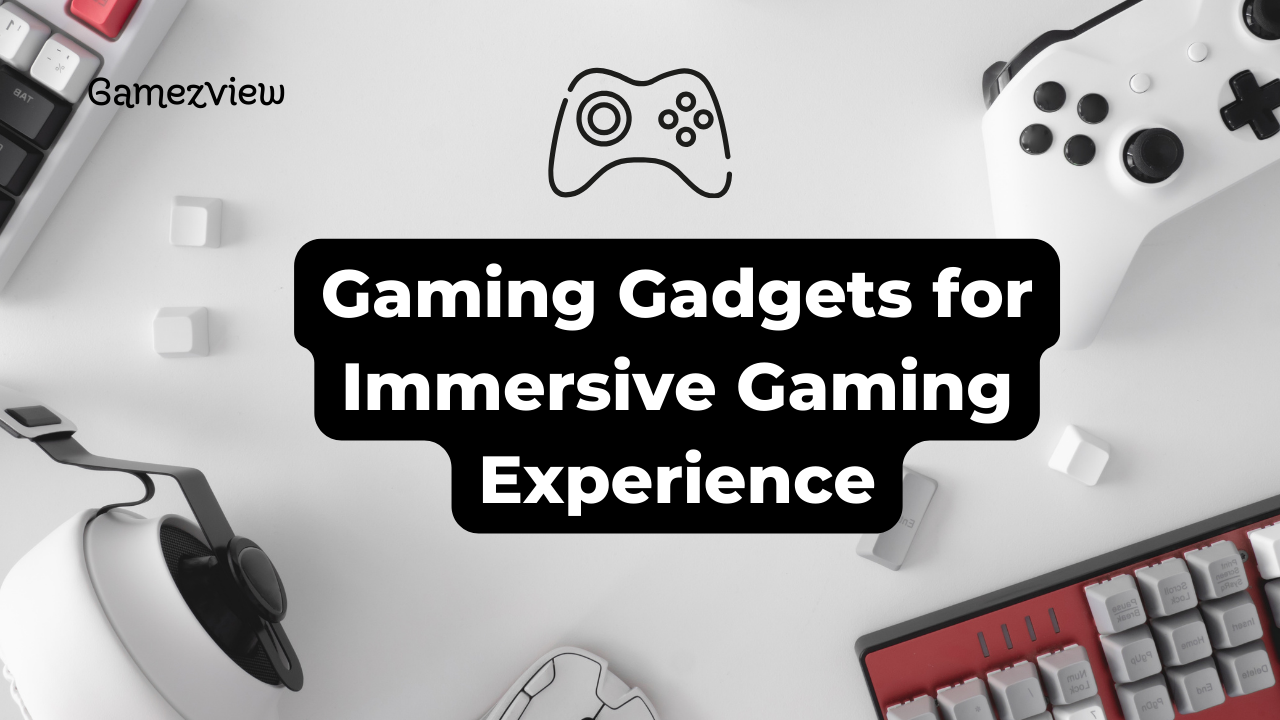In the rapidly evolving world of gaming technology, Virtual Reality (VR) headsets and motion controllers stand out as groundbreaking innovations that are revolutionizing the way we interact with digital environments. These gadgets have transformed traditional gaming, offering players an immersive gaming experience that goes beyond mere screen interaction. This article delves into the intricacies of VR headsets and motion controllers, exploring how they work, their impact on gaming, and the future they herald.
The Evolution of Virtual Reality in Gaming
Origins of Virtual Reality
Virtual Reality technology has its roots in the 1960s, but it wasn’t until recent years that it became accessible to the average consumer. Early attempts at VR were hampered by high costs and limited technology. However, advancements in computing power, graphics, and miniaturization have led to the development of powerful VR headsets that can deliver lifelike simulations and immersive experiences.
Breakthroughs in Consumer VR
The launch of the Oculus Rift in 2016 marked a significant milestone in consumer VR. Developed by Oculus VR, a company founded by Palmer Luckey, the Rift was one of the first consumer-grade VR headsets to offer high-resolution displays, precise motion tracking, and a wide field of view. Following this, other tech giants like HTC with the Vive and Sony with the PlayStation VR entered the market, further popularizing VR gaming.
How VR Headsets Work
Key Components of VR Headsets
Modern VR headsets consist of several critical components that work together to create a seamless virtual experience:
- Displays: High-resolution screens, often one for each eye, provide stereoscopic images that give a sense of depth.
- Lenses: These are placed between the user’s eyes and the display to focus and reshape the image for each eye, creating a 3D effect.
- Sensors: Motion tracking sensors, including gyroscopes and accelerometers, track the user’s head movements to adjust the display accordingly, creating the illusion of being inside the game.
- Controllers: Handheld devices that track the position and movement of the user’s hands, allowing for interaction with virtual objects.
Immersion through Visual and Auditory Feedback
The immersive quality of VR headsets is achieved through a combination of high-definition visuals and 3D audio. The wide field of view and fast refresh rates help reduce motion sickness and enhance realism. Coupled with spatial audio, which provides directional sound, users can experience a convincing simulation of real-world environments.
Motion Controllers: Enhancing Interaction
The Role of Motion Controllers in Gaming
Motion controllers are pivotal in bridging the gap between the physical and virtual worlds. These devices, which include handheld controllers and full-body tracking systems, allow users to interact with virtual environments naturally and intuitively.
Types of Motion Controllers
Several types of motion controllers cater to different gaming needs:
- Handheld Controllers: Devices like the Oculus Touch and HTC Vive Controllers track the position and movement of the user’s hands, enabling actions such as grabbing, throwing, and gesturing.
- Full-Body Tracking: Systems like the Vicon and OptiTrack use external sensors to track the movement of the entire body, providing a more comprehensive interaction experience.
- Motion-Sensing Cameras: Devices like the PlayStation Camera and Microsoft Kinect use cameras to capture body movements, allowing for hands-free control.
Impact on Game Design
Motion controllers have significantly influenced game design, leading to the creation of games that emphasize physical activity and real-world interaction. Titles like Beat Saber and Superhot VR require players to move their bodies to dodge obstacles or attack enemies, offering a physically engaging and immersive gaming experience.
Key VR Headsets in the Market
Oculus Rift and Oculus Quest
Oculus Rift was one of the pioneers of modern VR gaming, offering a robust platform for both gaming and virtual experiences. Its successor, the Oculus Quest, further revolutionized VR by being a standalone headset that doesn’t require a PC, making VR more accessible.
HTC Vive
The HTC Vive is renowned for its room-scale VR capabilities, allowing users to move around in a physical space while interacting with the virtual world. It offers a high level of immersion with precise motion tracking and a wide array of compatible games and applications.
PlayStation VR
PlayStation VR brings VR to the console market, providing an affordable and accessible way for PlayStation owners to experience VR. It offers a range of exclusive titles that take full advantage of the PS VR’s capabilities, including Astro Bot: Rescue Mission and Resident Evil 7: Biohazard.
Benefits of VR Headsets and Motion Controllers
Enhanced Immersion
VR headsets and motion controllers offer an unparalleled level of immersion by engaging multiple senses and allowing for natural interactions within a virtual space. This creates a more engaging and realistic experience compared to traditional gaming setups.
Increased Physical Activity
Many VR games require physical movement, which can promote exercise and enhance overall health. Games like Beat Saber and BoxVR offer an enjoyable way to stay active while playing.
Improved Cognitive Skills
Studies have shown that VR gaming can improve cognitive skills such as spatial awareness, problem-solving, and hand-eye coordination. The interactive nature of VR encourages players to think and react quickly, enhancing these cognitive abilities.
Challenges and Future of VR and Motion Controls
Technical Challenges
Despite their many advantages, VR headsets and motion controllers face several challenges. Issues such as motion sickness, the need for high computational power, and the relatively high cost of entry are barriers to widespread adoption.
Future Prospects
The future of VR and motion controls is promising, with advancements in technology likely to overcome current limitations. Developments such as improved wireless capabilities, lighter and more comfortable headsets, and more affordable pricing are expected to make VR more accessible. Additionally, the integration of technologies like Augmented Reality (AR) and Artificial Intelligence (AI) could lead to even more immersive and interactive gaming experiences.
VR headsets and motion controllers represent the cutting edge of gaming technology, offering players an immersive and interactive experience that goes beyond traditional gaming. As technology continues to advance, these gadgets are set to become even more integral to the gaming landscape, providing ever more realistic and engaging experiences.



